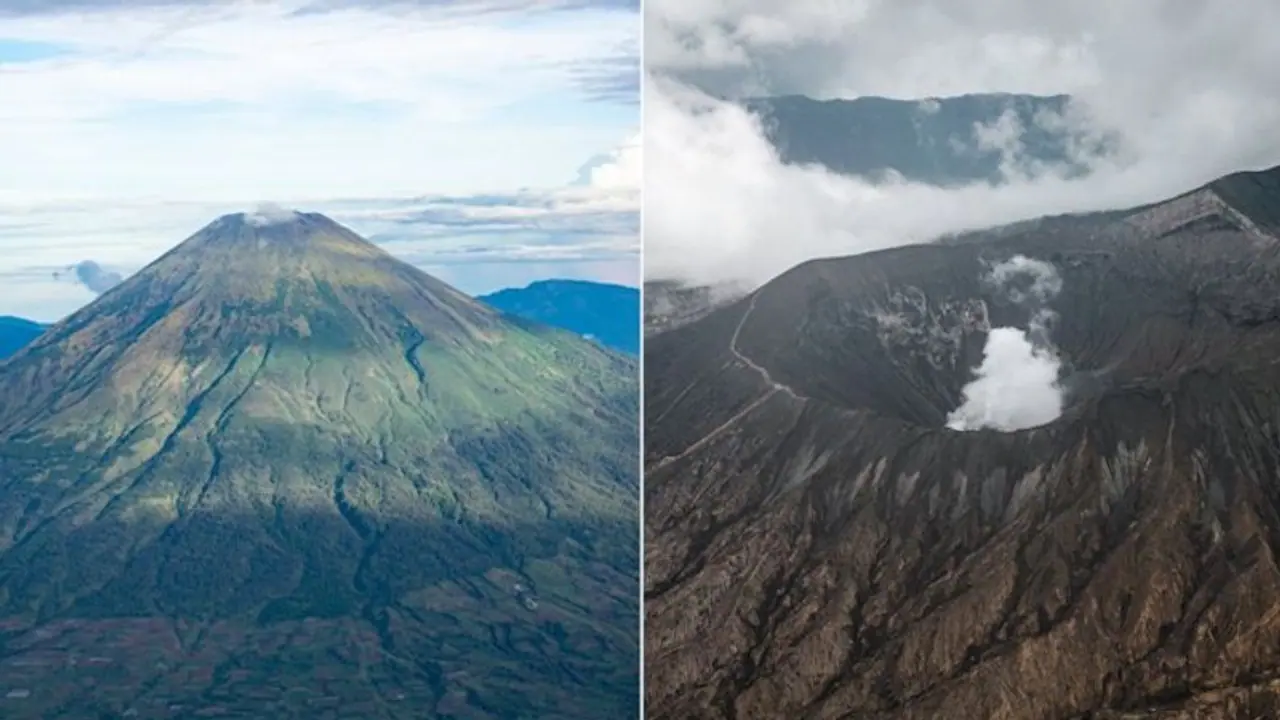Explore 10 dormant volcanoes worldwide, from Mount St. Helens to Mount Fuji, dormant yet captivating geological giants holding the potential for future eruptions. Discover their histories and significance in our ever-changing world
Dormant volcanoes, nature's ticking time bombs, lie in quiet repose, concealing their fiery potential beneath serene landscapes. In this article, we explore ten such geological marvels, each with a unique history and potential for future activity.

ALSO READ: Increased heart rate to sleep disturbances: 7 harmful effects of Black Coffee
Mount St. Helens, USA: Mount St. Helens, nestled in the Cascade Range, erupted explosively in 1980, causing widespread devastation. Since then, it has been dormant, with occasional steam venting, serving as a reminder of the Earth's power.
Mount Vesuvius, Italy: Famous for burying Pompeii in 79 AD, Mount Vesuvius has a rich history of eruptions. It's currently dormant, but scientists closely monitor it due to its proximity to Naples, a densely populated city.
Mauna Kea, Hawaii: Mauna Kea is one of the world's tallest dormant volcanoes, reaching nearly 14,000 feet above sea level. It offers a stunning glimpse into Earth's geological past and is home to several astronomical observatories.
Mount Teide, Spain: Located on Tenerife in the Canary Islands, Mount Teide is the highest peak in Spain. It last erupted in 1909 and is now a UNESCO World Heritage site, drawing tourists and scientists alike.
Cotopaxi, Ecuador: Cotopaxi is one of South America's most active volcanoes, but it has been dormant since 1940. Despite its inactivity, it remains a significant geological and ecological landmark.
Mount Fuji, Japan: Iconic Mount Fuji, Japan's highest peak, hasn't erupted since 1707. Its symmetrical beauty and cultural significance attract millions of tourists every year.
Mount Kilimanjaro, Tanzania: Africa's tallest mountain, Mount Kilimanjaro, has not erupted for over a century. Its icy peaks and unique ecosystems make it a must-visit for adventure enthusiasts.
Mount Rainier, USA: Mount Rainier, an imposing stratovolcano in Washington State, last erupted around 1000 years ago. It now stands as an emblem of the Pacific Northwest.
Mount Popocatépetl, Mexico: Popocatépetl, or "Popo," is one of Mexico's most active volcanoes. It has shown intermittent activity in recent years, reminding us of its potential for larger eruptions.
Mount Hekla, Iceland: Known as the "Gateway to Hell," Mount Hekla has erupted frequently in the past, with its last major eruption in 2000. Today, it keeps experts vigilant due to its history of unpredictability.
ALSO READ: International Day of Clean Air 2023: Breathing life into a sustainable future
These dormant volcanoes, frozen in time, exemplify Earth's dynamic nature. While currently at rest, their future remains uncertain, offering both scientific intrigue and natural beauty for those who explore them. Witnessing these geological wonders reminds us of the planet's ever-evolving landscape.
